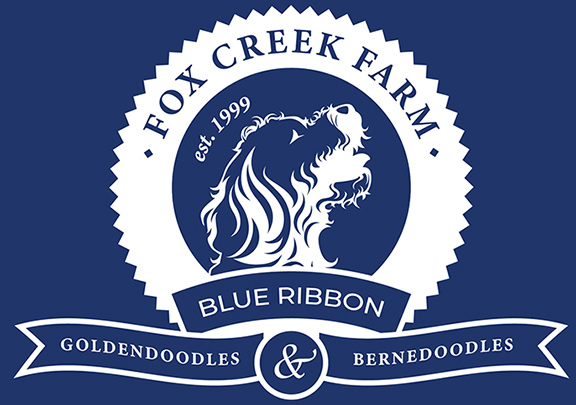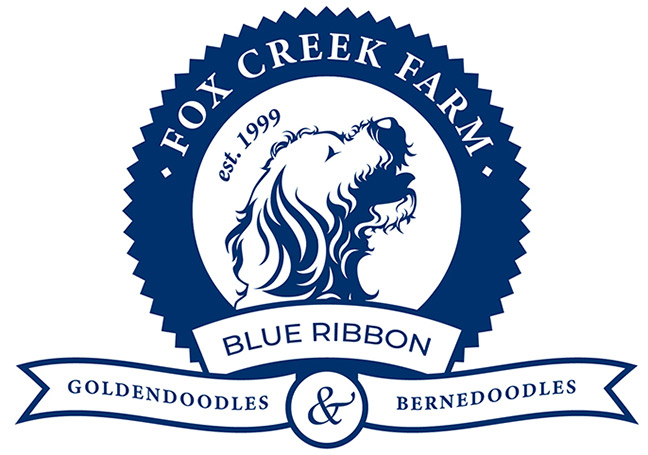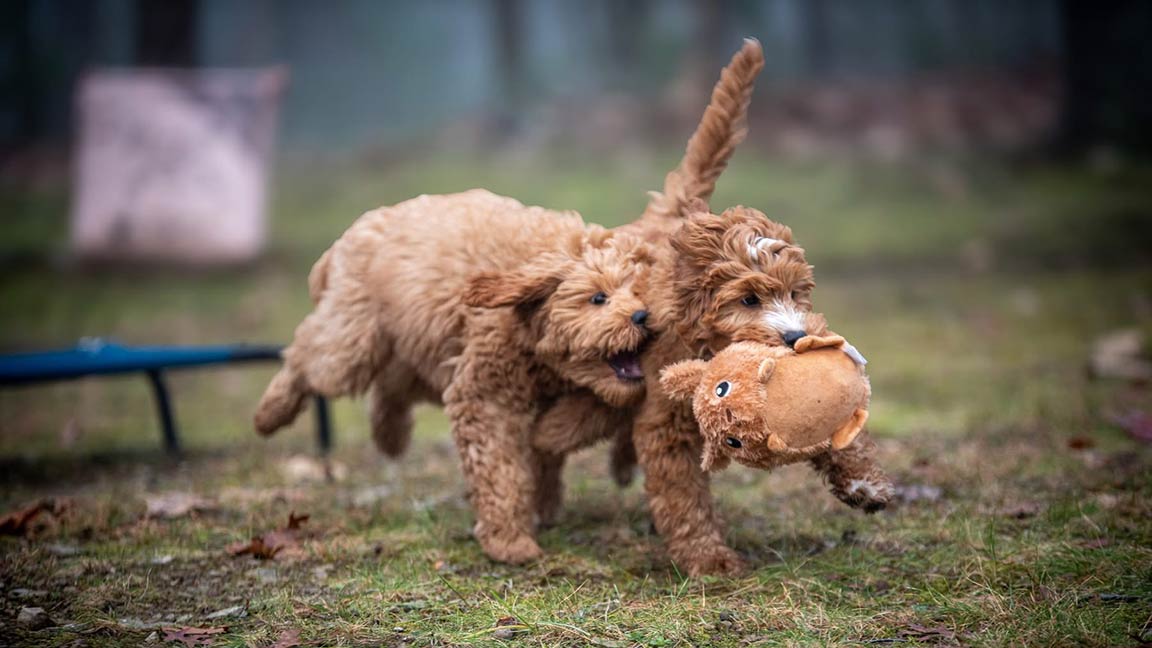
Separation Anxiety in Dogs: How to Help Your Pup Feel Safe
If your dog whines, paces, or seems nervous every time you pick up your keys, you may be dealing with separation anxiety in dogs. It’s one of the most common behavioral challenges for pet owners and one of the most difficult to observe. Dogs don’t understand why their favorite person disappears, and their worry can quickly turn into destructive or anxious behavior.
At Fox Creek Farm, we’ve raised countless well-adjusted, emotionally balanced puppies by focusing on early socialization and confidence-building from the start. Whether you’ve just brought home a Goldendoodle puppy or you’re helping an adult dog overcome anxiety, there are many proven ways to help your pup feel calm, safe, and confident when alone.
What Is Separation Anxiety in Dogs?
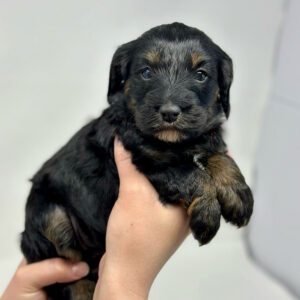 Separation anxiety in dogs happens when a pup becomes extremely distressed after being separated from their owner or family. While all dogs miss their people to some degree, true separation anxiety causes panic-like symptoms that appear whenever they’re left alone.
Separation anxiety in dogs happens when a pup becomes extremely distressed after being separated from their owner or family. While all dogs miss their people to some degree, true separation anxiety causes panic-like symptoms that appear whenever they’re left alone.
Common signs include:
- Excessive barking, whining, or howling after you leave
- Chewing furniture, scratching doors, or digging at windows
- Accidents inside the house, despite being potty-trained
- Drooling, panting, or pacing when you prepare to leave
- Attempts to escape crates or confinement areas
It’s important to remember that these behaviors come from fear, not stubbornness. Dogs with separation anxiety are not being “bad”; they’re simply overwhelmed and unsure if their loved ones will return.
Why Separation Anxiety in Dogs Happens
There isn’t one single cause for separation anxiety in dogs, it’s usually a mix of emotional sensitivity, environment, and past experiences.
Sudden Routine Changes
Dogs thrive on consistency. A new job schedule, moving homes, or a vacation that interrupts their daily routine can spark anxiety.
Traumatic Past Experiences
Dogs who have been abandoned, rehomed, or spent time in shelters may carry lingering fears of being left again.
Over-Attachment
When dogs are rarely alone, they can become overly dependent on constant companionship. Teaching short periods of alone time helps prevent this from forming.
Lack of Mental Enrichment
Bored dogs are more prone to stress. A lack of mental stimulation can amplify anxiety, especially in intelligent breeds like Goldendoodles and Bernedoodles.
At Fox Creek Farm, we address these factors early by introducing puppies to mild independence and positive crate experiences. Our puppies learn that alone time isn’t scary, it’s simply a chance to rest until playtime begins again.
How to Help Your Dog Overcome Separation Anxiety
Helping your dog overcome separation anxiety requires patience and consistency, but the results are well worth the effort.

Start with Short Absences
Begin by leaving for just a minute or two, then gradually increase the time as needed. Praise your dog when you return and find them calm and relaxed. The goal is to show that you always come back.
Use Positive Reinforcement
Reward independence. Give a small treat or favorite toy right before you leave. Your dog will start associating your departure with something positive.
Create a Safe Space
Whether it’s a crate, a dog bed, or a cozy corner, give your dog a familiar area that feels like their den. Add soft bedding, favorite toys, and maybe a blanket that smells like you.
Keep Your Energy Calm
Dogs mirror your emotions. If you make a big deal out of leaving or returning, they’ll feed off your energy. Try to keep goodbyes and greetings low-key.
Tire Them Out
Physical exercise helps reduce anxiety. Take your pup for a brisk walk, play fetch, or do some training before heading out the door. A tired dog is a relaxed dog.
Provide Mental Stimulation
Interactive puzzles, snuffle mats, lick mats, and treat-dispensing toys keep your dog’s mind busy and prevent boredom from turning into anxiety.
Use Comforting Sounds
Leave on soft music, white noise, or a podcast to help mask outdoor sounds that might trigger barking or stress.
Consider Natural Calming Aids
Some dogs benefit from gentle, natural support to ease their anxiety. Products designed with safe, science-backed ingredients can help your pup feel more relaxed when you’re away. One of our top recommendations is PawTree’s Chillax Calming Supplement.
Chillax is made with natural ingredients like L-theanine, chamomile, and passion flower that promote relaxation without drowsiness. It’s a great option for dogs who experience mild to moderate separation anxiety, especially during transitions such as moving to a new home, crate training, or adjusting to a new routine.
We’ve seen excellent results using Chillax alongside consistent training and enrichment activities. It helps take the edge off while you work on long-term behavioral strategies, so your dog can stay calm, focused, and happy even when alone. For many families, this gentle formula can make all the difference in helping a pup find peace during periods of solitude.
When to Seek Professional Help
If your dog’s anxiety causes severe distress, such as self-injury, destructive behavior, or constant howling, it may be time to work with a professional. Certified trainers or veterinary behaviorists can help create a personalized desensitization plan.
Some veterinarians may recommend short-term medication to reduce anxiety while training progresses. The goal isn’t to sedate your dog, it’s to help them learn that being alone is safe.
Preventing Separation Anxiety in Puppies
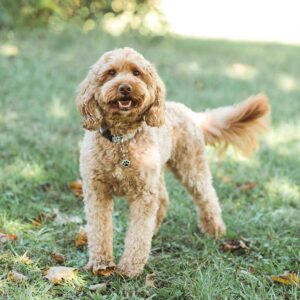
Prevention is always easier than treatment. The best way to prevent separation anxiety in dogs is to start early with confidence-building exercises.
At Fox Creek Farm, we incorporate independence training into our puppy-raising program. Puppies are gently introduced to crate time, short periods of alone time, and enriching toys. These small steps build resilience and teach them that quiet time is normal and safe.
When you bring your puppy home, continue what we started:
- Keep departures and arrivals calm and brief
- Encourage quiet rest periods during the day
- Use consistent routines for feeding, play, and bedtime
- Offer praise when your puppy stays calm as you move around or leave the room
Puppies who grow up understanding structure and trust become adult dogs that handle alone time gracefully.
The Role of Enrichment and Companionship
Mental and physical enrichment can significantly enhance your dog’s emotional well-being. Even ten minutes of daily training or sniff walks can make a big difference. Goldendoodles and Bernedoodles, in particular, are highly intelligent and sociable breeds that crave interaction and engagement.
Rotate toys weekly, introduce new scents, and teach fun tricks like “find it” or “spin.” These little games keep your dog’s brain busy and reduce stress levels, especially when they’re alone.
The Fox Creek Farm Promise
At Fox Creek Farm, we raise every puppy with emotional stability in mind. Our puppies are born and raised in an enriching environment, surrounded by love, routine, and human interaction from the start. We focus on developing puppies that are not only healthy and well-bred but also mentally resilient.
By the time a Fox Creek Farm puppy goes home, they’ve already been introduced to crate training, early independence, and positive reinforcement. This foundation helps prevent behavioral challenges, such as separation anxiety in dogs, making the transition to a new family smoother and happier.
We believe that every puppy deserves to grow into a confident companion who feels secure even when their favorite human steps out for a while.

Frequently Asked Questions: Separation Anxiety in Dogs
What’s the difference between separation anxiety and boredom?
Bored dogs might act out occasionally, but anxious dogs show consistent distress when left alone—like drooling, whining, or destructive behavior focused near exits.
Can crate training make separation anxiety worse?
Only if the crate is misused. If the crate feels like a punishment, anxiety can increase. When introduced positively, it becomes a calming retreat your dog loves.
Are some breeds more prone to separation anxiety in dogs?
Yes, affectionate and people-oriented breeds such as Goldendoodles, Bernedoodles, and Labradors often form deep attachments and may struggle more when left alone.
Do dogs outgrow separation anxiety?
Many improve with patient, consistent training. Puppies raised with positive independence exercises are much less likely to develop severe anxiety as adults.
What if I work long hours?
If you’re away often, consider dog daycare, a trusted pet sitter, or a family member to check in on your dog midday. Regular breaks help reduce loneliness and restlessness.
Separation anxiety in dogs doesn’t have to define your relationship with your pet. With empathy, structure, and consistency, you can teach your pup that alone time is safe—and that you’ll always come home. At Fox Creek Farm, we’re proud to help families raise confident, emotionally healthy dogs who trust deeply and love wholeheartedly.
